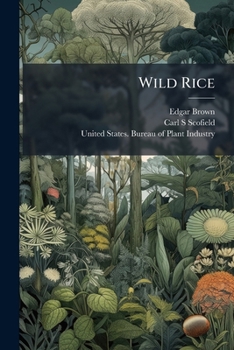Wild Rice
"Wild Rice: Its Uses and Propagation" offers a detailed look into the historical cultivation and uses of wild rice in the early 20th century. Authored by Edgar Brown, Carl S. Scofield, and the United States Bureau of Plant Industry, this work provides valuable insights into agricultural practices and botanical understanding of the period. The book delves into the methods of propagating wild rice, examining its significance as a food source, and detailing its role within the broader context of American agriculture.
This historical document is essential for those interested in the history of agriculture, botany, and the cultivation of grains. It offers a snapshot into the techniques and considerations of early agricultural science, making it a valuable resource for researchers, historians, and anyone curious about the origins of food cultivation practices.
This work has been selected by scholars as being culturally important, and is part of the knowledge base of civilization as we know it. This work was reproduced from the original artifact, and remains as true to the original work as possible. Therefore, you will see the original copyright references, library stamps (as most of these works have been housed in our most important libraries around the world), and other notations in the work.
This work is in the public domain in the United States of America, and possibly other nations. Within the United States, you may freely copy and distribute this work, as no entity (individual or corporate) has a copyright on the body of the work.
As a reproduction of a historical artifact, this work may contain missing or blurred pages, poor pictures, errant marks, etc. Scholars believe, and we concur, that this work is important enough to be preserved, reproduced, and made generally available to the public. We appreciate your support of the preservation process, and thank you for being an important part of keeping this knowledge alive and relevant.





